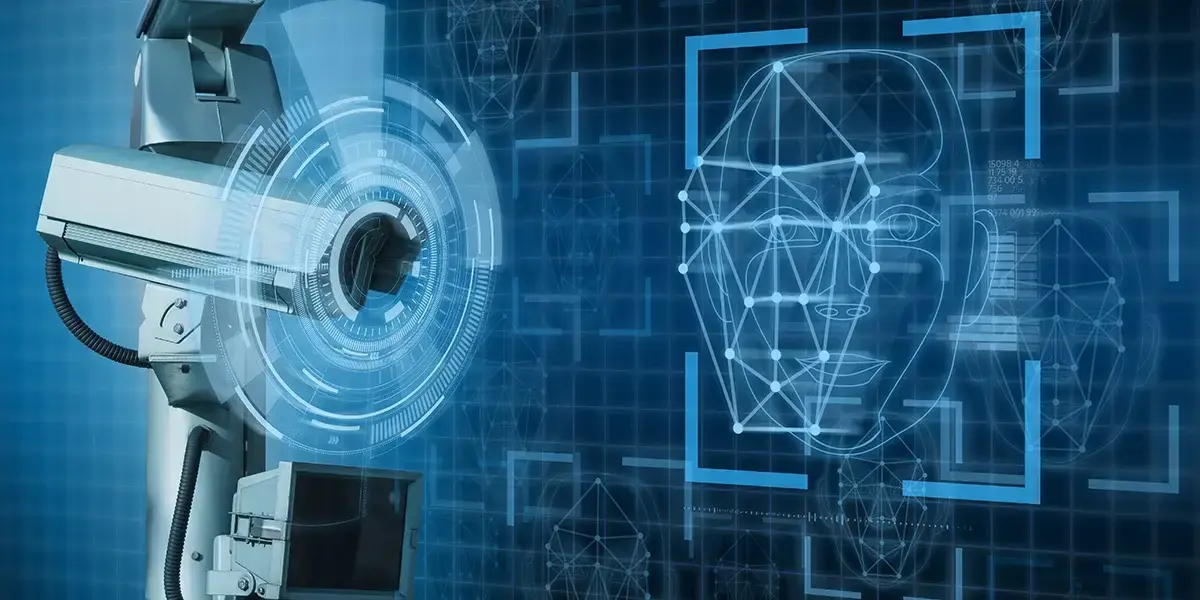Why Switch to a Cloud-Based Video Surveillance Solution?
by VIDIZMO Team, Last updated: November 27, 2025, Code:

This blog explores the growing need for cloud-based video surveillance solutions and how they address the limitations of traditional VMS systems. It highlights key advantages such as enhanced security, remote access, compliance readiness, and better footage management.
Organizations are turning to cloud services for multiple use cases and one of these use cases has been video surveillance. But why should one embrace cloud-based video surveillance solutions? What are the advantages of storing surveillance footage on the cloud as opposed to a traditional VMS? Read more in this blog.
Before we begin, it’s important to understand the issues and risks involved with traditional systems when it comes to storing and sharing surveillance footage. For that, consider the following scenario:
An agency needs to view surveillance footage of a street where they suspect a crime to have occurred. However, to securely access that footage, they either have to travel to where the surveillance footage is stored or ask the local authority to send this footage via email or other electronic means.
From an evidence protection perspective, this process is risky and not secure enough. How many people could have accessed that footage already? Is there a mechanism to support the validity of such evidence in court? Is the sharing and storing mechanism secure, especially from cyberattacks?
According to a study by researchers at the University of Maryland, hackers are likely to attack a computer every 39 seconds on average. A survey by Accenture, showed that 68% of business leaders feel that cybersecurity risks are increasing.
Traditional systems are not as optimized as cloud based solutions, to protect you from cyberattacks, and can compromise the integrity of your video surveillance footage.
This blog talks about the advantages of switching to cloud-based surveillance systems, and how you can easily set up one.
What Are Cloud-Based Video Surveillance Solutions?
Cloud-based video surveillance solutions refer to video management systems (VMS) that store and manage surveillance footage in the cloud, instead of using on-premise storage devices. This innovative approach allows security footage from cameras to be transmitted to remote, secure servers in the cloud for storage, management, and real-time access. Unlike traditional video surveillance systems, which rely on local servers or storage devices, cloud-based systems provide flexible, scalable, and highly accessible options for managing video surveillance data.
These systems automatically upload and store video footage from connected surveillance cameras to a cloud data center, where it can be accessed, analyzed, and streamed in real-time through a secure portal. Cloud-based surveillance systems also offer the ability to store data for longer periods of time and access it from any device, from anywhere, as long as there's an internet connection.
Key Features of Cloud-Based Video Surveillance Solutions:
-
Remote Access and Control:
-
Cloud-based systems allow users to remotely view and manage surveillance footage from any location via an internet-connected device, offering greater flexibility and accessibility.
-
Users can log into a secure platform to access real-time footage or recorded videos from multiple cameras, even if they are located in different regions.
-
-
Scalability:
-
As the need for surveillance footage storage grows, cloud solutions can easily scale by expanding the cloud storage capacity, without requiring additional on-site hardware.
-
This eliminates the need for frequent upgrades to physical storage devices, which can be costly and time-consuming.
-
-
Enhanced Security and Data Protection:
-
Cloud-based video surveillance systems are typically hosted by leading cloud providers like AWS, Microsoft Azure, and Google Cloud, which offer robust security protocols, including data encryption and multi-factor authentication.
-
These platforms ensure that surveillance data is protected from unauthorized access, breaches, or tampering, which is crucial for compliance with regulations like GDPR and HIPAA.
-
-
Automatic Backups:
-
Cloud surveillance systems usually include automatic backups of video data, both on-site and off-site. This ensures that footage is stored securely and can be restored in case of hardware failures, natural disasters, or cyberattacks.
-
Cloud providers typically offer disaster recovery capabilities, ensuring that data is protected and easily recoverable.
-
-
Compliance and Legal Assurance:
-
Many cloud-based systems are compliant with industry regulations such as GDPR, HIPAA, and other regional data protection laws. This is particularly important for industries like healthcare and finance, where surveillance data is considered sensitive.
-
With built-in access controls, audit logs, and data encryption, cloud-based systems ensure that all video surveillance footage meets regulatory standards.
-
-
Cost-Effectiveness:
-
Cloud surveillance systems eliminate the need for significant upfront investments in hardware and storage infrastructure, reducing both capital and maintenance costs.
-
With cloud-based solutions, businesses typically pay for the storage and services they use, making it a more affordable and flexible option for organizations of all sizes.
-
-
Artificial Intelligence Integration:
-
Many cloud-based video surveillance systems integrate AI technologies to enhance functionality. Features such as facial recognition, object detection, and smart video search make it easier to manage and analyze video data.
-
AI-powered systems allow for quicker retrieval of footage based on specific events or objects, such as tracking a particular person or item across multiple cameras.
-
Benefits of Cloud-Based Video Surveillance Solutions:
-
Accessibility from Anywhere: Cloud-based solutions enable security teams to access footage and monitor live feeds from anywhere in the world, offering convenience and flexibility, especially for organizations with multiple locations.
-
Reduced Infrastructure Costs: Traditional video surveillance requires significant investment in physical storage devices, servers, and maintenance. Cloud-based systems significantly lower these costs, as everything is hosted and managed remotely.
-
Improved Collaboration and Sharing: Cloud systems simplify the process of sharing video footage with authorized personnel, law enforcement, or other stakeholders, enhancing collaboration. These systems also offer secure sharing options, such as password protection, ensuring that only authorized individuals can view sensitive data.
-
Seamless Integration with Other Systems: Cloud-based surveillance systems can integrate with other security technologies, such as access control systems, alarm monitoring systems, and identity management tools, providing a more comprehensive security solution.
In summary, cloud-based video surveillance solutions offer businesses a more secure, flexible, and cost-effective way to manage and store video footage. These systems not only enhance the accessibility and security of surveillance data but also provide advanced features that make video management more efficient and reliable.
Cloud-based Video Surveillance Solutions and Their Advantages
Cloud-based surveillance systems automatically extract surveillance videos from cameras and store them in a centralized, secure and compliant cloud data center. Certain systems allow you to live stream camera footage and view them through one portal, even if cameras are located in different cities.
Cloud-based video surveillance solutions have the following advantages over traditional VMS:
Remote Access
Cloud based surveillance solutions can enable you to access footage remotely from anywhere. As long as you have access, you can remotely operate it and this can help you save time.
Improved Sharing
You can easily share the footage with relevant audiences. Modern systems reduce the risks involved in sharing by allowing you to password protect and share such evidence and keep track of the people with whom the evidence has been shared.
Data Backups
Cloud systems create an automatic on-site and off-site backup, which means all your data will be backed up. This even works for disaster situations. We recommend storing your data on leading cloud providers such as AWS, Google or Microsoft as these have data backup and disaster recorvery capabilities.
Flexible Storage
Cloud storage is flexible as it can expand when data requirements grow. You don’t need to spend extra time and money in acquiring storage drives every time your requirements grow.
Security
Cloud datacenters have multiple capabilities to ensure that your data is secure, such as FIPS 140 compliant encryption, identity and access management, and in-built protocols to alert for system breaches. You can also add an additional layer of security to password protect your data while sharing.
For instance: Microsoft Azure provides multi-layered protection to its users with security controls built into hardware and firmware components and employs a team of over 3,500 global cybersecurity experts to protect your data.
Through SSO-based authentication included in cloud-based systems, you can better manage access for the system and ensure that only authorized users can access content stored within.
Compliance
Adhering to compliance is essential when it comes to surveillance footage as this is a form of personal data and is governed by various regional compliances such as HIPAA, GDPR, etc.
For instance: Companies that lie under the European Union need to follow GDPR laws for handling personal data collected under surveillance footage. Under this compliance, organizations are required to provide surveillance footage at the request of the data subject (person who has appeared in the footage); any personal information that they have collected, and how the information is being used, and where it is kept. Companies must be able to provide such information, and cloud solutions essentially help them do this.
Leading cloud providers such as AWS, Google, Microsoft Azure, etc., cover almost every regional and industrial compliance. For example, Azure’s data centres cover more than 90 compliances. So, instead of modifying your own storage to make it compliant, which is a time-taking process, it is better to store and process data in data centres of these cloud providers.
Moreover, in-built application features further help meet compliance such as segregated access and audit logs for every activity performed on personal data.
VIDIZMO – A Cloud Based Video Surveillance Streaming and Management Solution
VIDIZMO offers Digital Evidence Management System (DEMS), which is a cloud-based video management system that helps you stream, manage, and store footage collected from various surveillance systems as well as the previous data that was stored on CDS or DVDs. You can use our platform to live stream surveillance from multiple cameras and view it through one or multiple portals. Our solution is not just limited to the cloud, as you can deploy on-premise and even in a hybrid infrastructure.

Other than the advantages mentioned above, our solution offers the following to further enhance management of surveillance footage.
Compliances
VIDZMO enables users to host their data on Azure, AWS etc., which are leading cloud providers that cover a wide range of regional and global compliances such as GDPR, FedRamp etc.
Audit Trails
VIDIZMO enables you to track the actions and activities performed in the digital evidence management software such as an event, IP address from where the event occurred – the system logs every activity! It also tracks when, where and who interacted with a file. This is important for companies complying with GDPR as they need to provide detailed lists regarding how personal data is being handled and who interacted with it. It is useful for law enforcement agencies as it helps prove the integrity of surveillance footage as evidence in court.
User and Rights Management
VIDIZMO allows you to create roles, segregate and create hierarchies in usage of content. Our role-based access feature enables you to set predefined user roles, which include Anonymous, Viewers, Contributors, Moderators, Managers and Administrators, according to authority order. We also allow you to create groups to segregate department wise access. You can even customize the platform to prevent anyone from accessing a surveillance file other than the person that uploaded it.
Tamper Detection
At VIDIZMO, we secure digital evidence files by using a hashing mechanism. When a file is uploaded in a portal, a unique hash value is generated and stored. If the uploaded evidence is modified or tampered with, the software will automatically generate a new hash value. When our tamper detection feature is run, the system will detect the change in hash values and will display that the file has been tampered with.
Disposition Policy
Proper management of evidence is essential from scratch to destruction. After closing that specific case in judicial proceedings, it becomes essential to dispose off the evidence safely. This way evidence cannot be misused. VIDIZMO’s Digital Evidence Management System allows you to set an evidence deleting period that will automatically dispose off files from the recycling bin.
Redaction
It is sometimes mandatory to hide confidential parts or text before presenting them in front of authorities. Redaction is essential as it shields personal information such as account numbers, codes, etc. Through VIDIZMO’s Digital Evidence Management System, you can redact objects or faces automatically or manually in order to protect identities and stay compliant.
Chain of Custody
To prove integrity of evidence in court, VIDIZMO offers a detailed chain of custody report on who was the last person to access the file, what actions were performed and how many users visited that specific file along with their IP address.
Artificial Intelligence
You have thousands of files stored in your library and want to look for a specific video. How would you do that? Will, you just keep on scrolling through your list, or will you be typing different tags - praying to get the right one? We provide advanced AI features that enable you to search within videos or evidence files through faces, objects, ASR, OCR, metatags, etc. AI automatically transcribes and translates the content so that users do not face any kind of trouble going through the content.
Key Takeaways
- Cloud-based video surveillance enhances accessibility, security, and compliance by centralizing and securing footage in cloud data centers.
- Remote access and secure sharing reduce operational delays and enable authorized personnel to retrieve evidence quickly.
- Built-in data backup and flexible storage prevent data loss and support organizational scalability.
- Compliance readiness is easier to maintain with support for GDPR, HIPAA, and FedRAMP through leading cloud providers like AWS and Azure.
- VIDIZMO’s DEMS offers powerful tools such as role-based access, AI-powered search, redaction, tamper detection, and chain of custody reporting.
In Summary
The shift to cloud-based video surveillance solutions is not just a technological upgrade; it’s a strategic move that enhances security, compliance, and efficiency. Cloud-based systems offer remote access, improved sharing capabilities, flexible storage, and stronger security measures, which are essential for modern organizations looking to manage and protect their surveillance footage effectively.
VIDIZMO’s Digital Evidence Management System (DEMS) takes this a step further with advanced features like tamper detection, AI-powered search, and a detailed chain of custody, ensuring that your surveillance footage remains secure, compliant, and easily accessible.
Transitioning to a cloud-based video surveillance system with VIDIZMO not only ensures compliance with industry standards such as GDPR and FedRAMP, but it also simplifies your surveillance management. VIDIZMO provides a seamless, secure, and scalable solution for all your video surveillance needs.
Request a Free Demo of VIDIZMO’s Video Surveillance Solution today and see how we can enhance your video surveillance management with the power of the cloud.
People Also Ask
Why should I switch to cloud-based video surveillance?
Cloud-based video surveillance systems offer better security, scalability, remote access, and compliance support compared to traditional on-premises VMS solutions.
Is cloud video surveillance secure?
Yes, cloud providers like AWS and Azure offer high-level encryption, access controls, and compliance coverage, ensuring your surveillance data is protected against unauthorized access and cyber threats.
How does VIDIZMO enhance video surveillance management?
VIDIZMO provides a cloud-based Digital Evidence Management System (DEMS) with features like AI-powered search, tamper detection, redaction, audit trails, and detailed access control for surveillance video management.
Can cloud surveillance help meet compliance requirements like GDPR or HIPAA?
Absolutely. Cloud providers offer data centers that meet international compliance standards, and VIDIZMO further supports compliance with audit logs, role-based access, and data privacy features.
What makes VIDIZMO better than traditional VMS systems?
Unlike traditional VMS, VIDIZMO offers centralized, compliant cloud storage, AI-driven search, enhanced user and evidence management, and flexible deployment options for modern surveillance needs.
Jump to
You May Also Like
These Related Stories

Cloud-Based Video Surveillance Storage – All You Need to Know

Ensuring US & GDPR Compliance while using AI for Video Surveillance




No Comments Yet
Let us know what you think